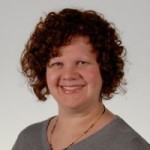Are you ready for a PR career in higher education?
By Kirsten M. Khire, APR
This year marks my 10th anniversary working in higher education public relations, following seven years in journalism. When people ask me what I do, I can predict some of the reactions. “It must be so nice to have the summer off.” Or “What a fun laid-back job!” Oh yes, I’ve come to identify the stereotypes and misconceptions about higher ed PR. For those new PR professionals considering hoping to break into the field, I have more information about working in higher education public relations and communications.
- Truth: It’s a very rewarding career. I often tell new interns during orientation that we are promoting one of the best products in existence – education. It’s a universal need and it’s very fulfilling to watch students complete their degrees and succeed. It’s also a thrill to be around faculty members who are researching and teaching new ideas in the field. That energy is genuinely contagious.
- False: Higher ed PR pros have the summers off. In my experience, the summer season is definitely quieter in the physical sense because the students and faculty members are mostly on hiatus. But for me, it has traditionally been a heavy production period (particularly in terms of publications and web projects) and a time to plan and strategize.
- True and False: It’s a fun, laid-back job. Fun it is, laid back it is not. If you are working for a public university, you are dealing with a non-profit budget, probably budget cuts, and a very small staff. You learn to be creative with your time and your talents. This morning, I created a PowerPoint for the dean, ghostwrote a dean communiqué and gathered photos for 3 fundraising videos – all before noon.
- True: Higher education public relations provides a solid public relations foundation. Recently I successfully completed the PRSA Accreditation process. The work I was doing met all of the major PR campaign processes – research, planning, implementation and evaluation. I may not have the budget that a major soft drink company might, but the strategy involved in PR campaigns remains the same.
- False: Higher ed PR doesn’t have clear goals. Like any business, higher education has very tangible business metrics. These include student recruitment (tuition dollars), external research funding (grants and contracts from government, foundations and industry) and individual support (donations from alumni and “friends.”) These are extremely real financial goals, and the sooner PR pros plug into them, the better. Public relations can proactively boost the brand and lead to measurable results of objectives.
- False: You need specific training for a higher ed PR career. My path is a case in point. As a former journalist, I’m comfortable conducting interviews with faculty members on topics that are unfamiliar or need layperson translation. As with most humans (we are only that!), PR professionals have strengths and areas of growth. Some are wonderful at media relations; others have a background in marketing. The goods news is that universities need a good variety of communications professionals.
All of this is a long-winded introduction to say, if you are still interested in this career, read on. Breaking into higher education PR is not impossible, but you need to be strategic. Having experience in non-profit settings, writing about research and of course being an alum/alumna all help. Pursuing your master’s degree or Accreditation also can help. Above all, networking with and talking to current PR pros in higher education can provide you with insight into the field and valuable connections during the job hunt.
 Kirsten Khire is an accredited communications professional with more than 17 years of experience in public relations and journalism, with a focus on strategic, digital, web and social media communications.
Kirsten Khire is an accredited communications professional with more than 17 years of experience in public relations and journalism, with a focus on strategic, digital, web and social media communications.

